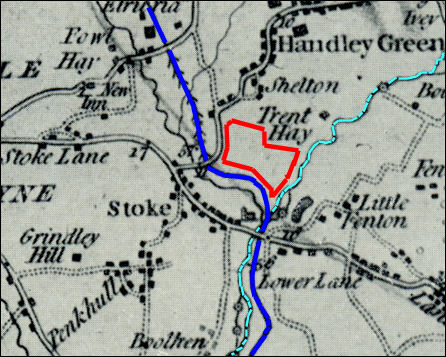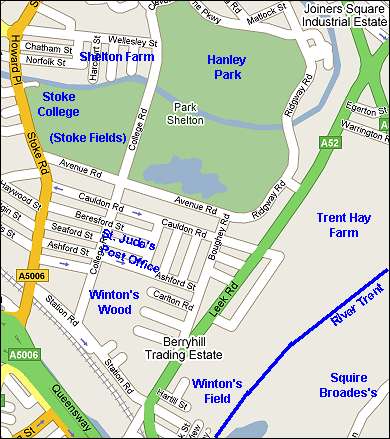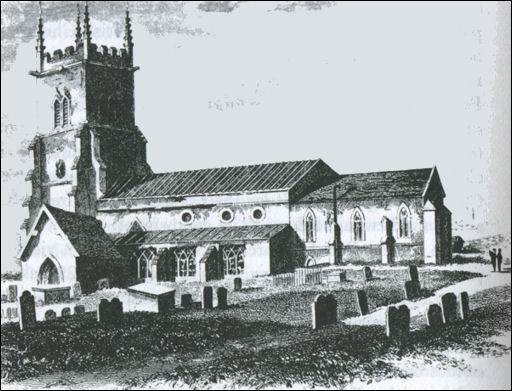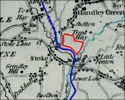|
Winton's Wood, Shelton,
Stoke-on-Trent, Staffordshire.
|
Where is Winton's Wood?
In 1775 the road
from Stoke to Hanley followed the present Shelton Old Road down to
the Fowlea Valley and up what is now Stoke Road. The area bounded by
the canal, the River Trent and Stoke Road was Winton's Wood &
Winton's Field.

Extract from William Yates
1775 Map of Staffordshire
- showing the position of Winton's Wood in red
the Trent & Mersey canal is shown in dark blue and the
River Trent in light blue
- click for larger map -

Modern day (2007) map of the area
showing the position of Winton's Wood and Field
|

The glebe lands of Stoke Church
Winton's Field and
Winton's Wood, to the north east of the map, were part of the Glebe lands
of the Stoke Church.
part
of the glebe estate, land belonging to the church at Stoke
map c.1800-30
This map below shows part
of the glebe estate, land belonging to the church. This estate comprised
over 150 acres with a third of the land in the township of Penkhull, a
third in Shelton (north of the Fowlea Brook) [which included the
Winton's Field and Winton's Wood area] and a third in Fenton (east of
the River Trent).
The Stoke church and the
rector's house (Stoke Hall) stood on moated sites which provided
protection not only from attackers but also from the river which
periodically flooded the meadow land in the valley bottom.


Stoke Church which was
taken down in 1829
to make way for a new church on a nearby site
- picture from Wards The
Borough of Stoke-upon-Trent, 1843 -
Timber from Winton Wood used to re-roof the
old church
In 1843 Ward recounts:
"...the church must have been re-roofed....
probably in the sixteenth century, when Church-ales were in vogue,
being voluntary gatherings of the parishioners to execute any work required
for the support or benefit of the church.... It appears that Winton Wood,
still part of the glebe, and retaining its ancient name, though despoiled of
its woodland character, and Cliff Hay, which belonged to the Duchy of
Lancaster, furnished the timber necessary for these repairs..."


next: Modern day traces of the
Winton name |

![]()